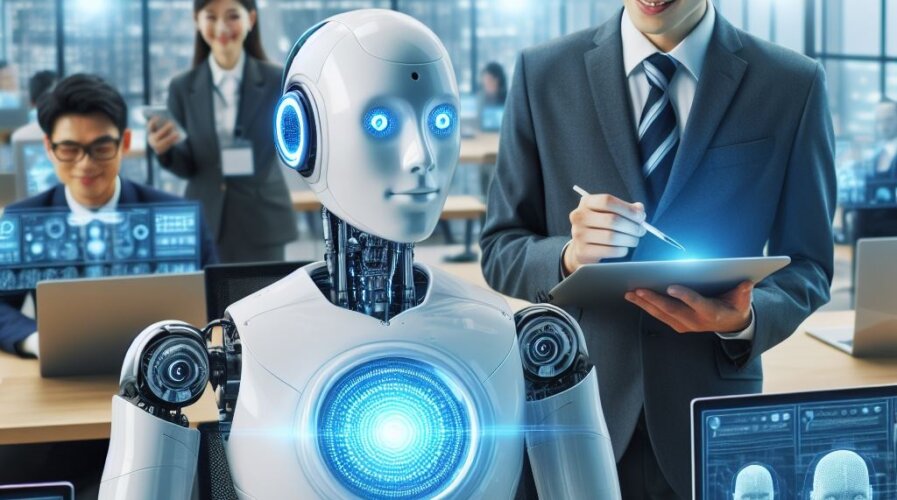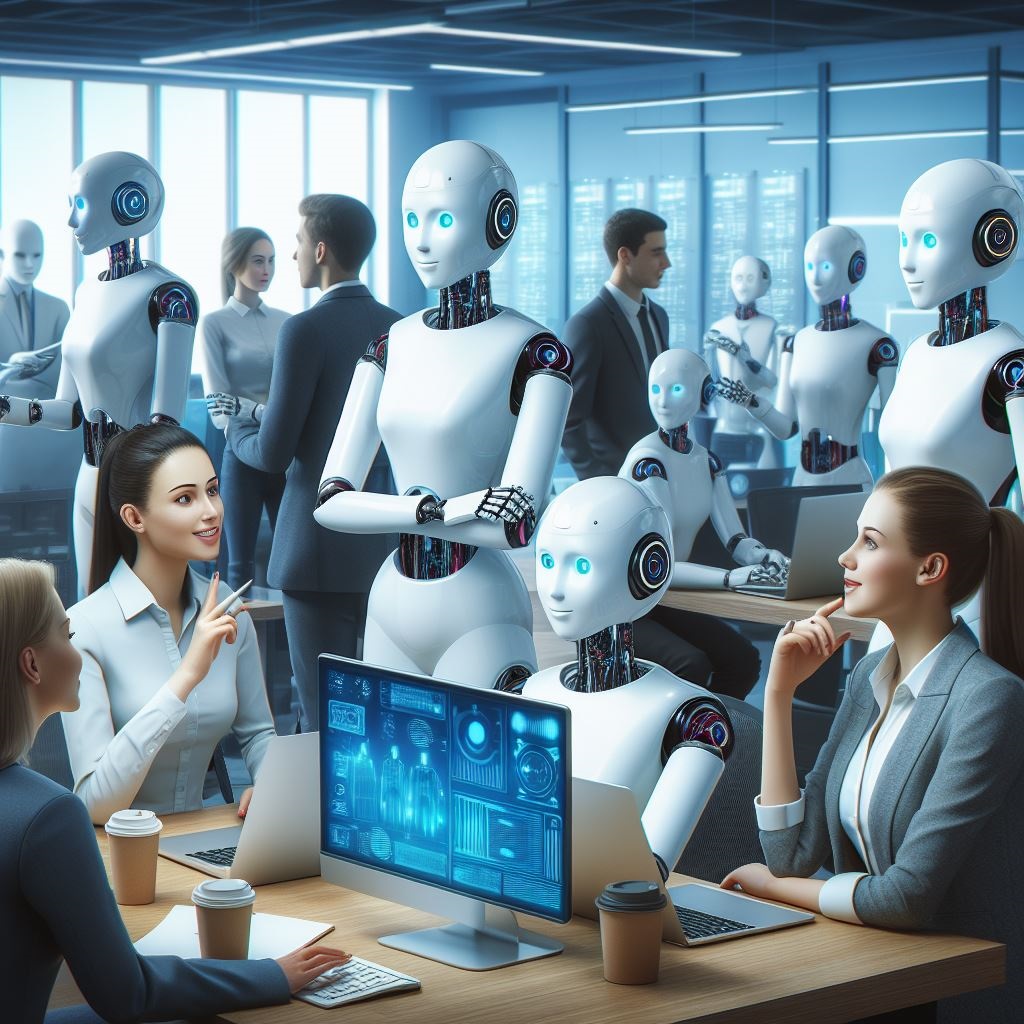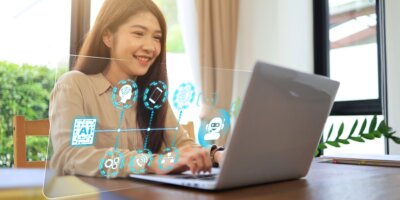
AI will have a significant impact on the world, but it will also depend on how humans use it. (Image generated by AI)
MIT Study: human workforce cheaper than AI and robots 🤖
- AI will have a significant impact on the workforce, but it will also depend on how its used.
- Researchers from MIT have released a study that indicates the human workforce still being relevant to organizations around the world today.
- The human workforce is also still cheaper compared to AI for now.
Before AI, the human workforce has endured all types of revolutions at work. But ever since AI started being capable of completing more tasks as work, employees have known their jobs would eventually be replaced by the technology. As generative AI lets technology do more “human work,” employees have found themselves being made redundant or having to upskill themselves to work with technology.
The World Economic Forum says that some 75% of companies are set to have adopted AI technologies by 2027. Meanwhile, 80% plan to accelerate automation during this period. Some companies have even started replacing entire roles with AI.
Layoffs and redundancy have happened throughout 2023 and are expected to continue throughout this year. Companies are scaling down on hiring and replacing some roles with technology. Employees who don’t fit restructuring plans are released. This is the reality that businesses around the world are implementing at this point.
While several studies clearly indicate that AI will not replace the human workforce but augment it, most businesses are feeling optimistic about jettisoning humans in favor of AI. In fact, a prompt on Bing asking if AI would take over the workforce someday also produced a rather interesting reply.
“This is a complex and controversial question that has no definitive answer. Ultimately, the question of whether AI will replace the human workforce is not a simple yes or no, but rather a matter of how, when, and where. AI is a powerful and evolving technology that will affect different industries, sectors, and regions in different ways. The future of work will depend on how humans adapt, collaborate, and innovate with AI. 🤖,” was the reply by Microsoft’s Bing. Yes, it added the robotic emoticon at the end of its reply as well.
There’s such a thing as kicking a species when it’s down, Bing.

The World Economic Forum stated that some 75% of companies are set to have adopted AI technologies by 2027. (Image generated by AI).
The workforce and AI
As ever when it comes to AI and the workforce, tech companies will say that the technology will enable workers to be better at what they do. But with generative AI being capable generating code and even planning out entire tours, what tasks are left for those working in such roles?
Most studies indicate these three points when it comes to AI and the workforce. They are:
- AI will not replace humans but rather augment their abilities and create new opportunities. AI can automate repetitive and mundane tasks, but it cannot replicate qualities such as creativity, empathy, and intuition. Humans with AI will have an advantage over humans without AI in the future job market.
- AI will replace some jobs, but also create new ones. AI could replace the equivalent of 300 million full-time jobs by 2030, but it could also lead to a productivity boom and new roles that require human skills.
- AI will have a significant impact on the world, but it will also depend on how humans use it. AI has the potential to bring about positive changes in society, such as enhanced healthcare, education, and sustainability. But it also poses ethical, social, and economic challenges that need to be addressed. Put simply, AI will change the world, but humans will shape its direction.
Many at the sharp end of the AI revolution would argue with this rosy assessment, saying that the state of the current workforce clearly indicates the impact AI has on industries, and the direction of travel for humans in the high-tech AI world.
But that’s where things gets interesting.
Replacing the workforce with AI may boost productivity and efficiency, but is it sustainable and is it actually cheaper? Running AI workloads actually requires a lot more energy and computing power. This means businesses would need to invest in more technology to support this, such as increased data center capacity and computing power. This itself generates more carbon, which is actually not sustainable in the long run.
At the same time, the cost of using AI as compared to a human workforce may seem low at first. But in the long run, the technology would eventually cost a lot more, simply because technology needs to be constantly updated and these updates are not going to always be free. The cost of securing AI applications is also another thing businesses need to consider.

Replacing the workforce with AI may boost productivity and efficiency, but is it sustainable and is it cheaper? (Image generated by AI).
The human workforce is still relevant
Researchers from MIT have released a study that indicates the human workforce is still relevant to organizations around the world today. The study is the first estimate of which tasks are technically feasible and economically attractive to automate and which are not.
“We focus on computer vision, where cost modeling is more developed. We find that at today’s costs, US businesses would choose not to automate most vision tasks that have ‘AI Exposure,’ and that only 23% of worker wages being paid for vision tasks would be attractive to automate. This slower roll-out of AI can be accelerated if costs falls rapidly or if it is deployed via AI-as-a-service platforms that have greater scale than individual firms, both of which we quantify. Overall, our findings suggest that AI job displacement will be substantial, but also gradual – and therefore there is room for policy and retraining to mitigate unemployment impacts,” the study stated.
The study was funded by the MIT-IBM Watson AI Lab and used online surveys to collect data on around 1,000 visually assisted tasks across 800 occupations. Only 3% of such tasks can be automated cost-effectively today, but that could rise to 40% by 2030 if data costs fall and accuracy improves, the researchers said.
For now, the study clearly shows that the high costs of AI, as in computer vision, simply mean that the human workforce is still a more economical option. But the study also concluded that as technology becomes cheaper, businesses may want to consider its adoption so that the impact is not as heavy, both economically on the company and the workforce.
The report also said that AI-as-a-service could solve some issues with tech adoption. But this raises the concern of how the data would be used and likely requires industry collaborations or policy initiatives to enable data sharing across companies.
While areas like computer vision only represent a small percentage of wages and the workforce, the researchers believe that their model mitigates the scale of labor displacement in the future. And that scale shows that the rate of job loss is lower than that already experienced in the economy.
“Our results point to a notably different path for AI automation than previously explored in the literature – one where the pace is more in line with traditional job churn and more amenable to traditional policy interventions, and where the cost-effectiveness of systems is crucial to determining their spread,” the report concluded.
READ MORE
- 3 Steps to Successfully Automate Copilot for Microsoft 365 Implementation
- Trustworthy AI – the Promise of Enterprise-Friendly Generative Machine Learning with Dell and NVIDIA
- Strategies for Democratizing GenAI
- The criticality of endpoint management in cybersecurity and operations
- Ethical AI: The renewed importance of safeguarding data and customer privacy in Generative AI applications




